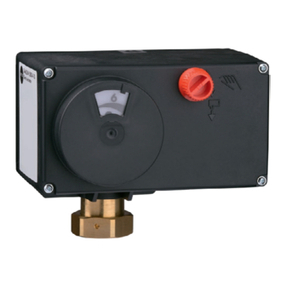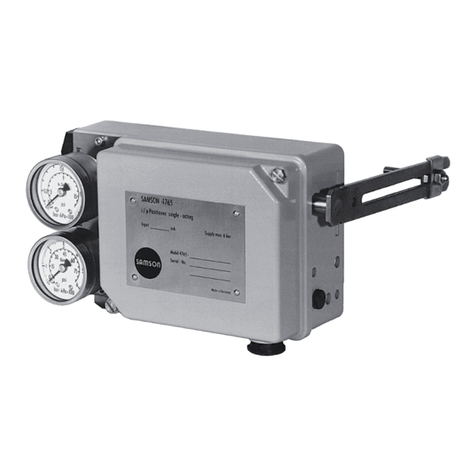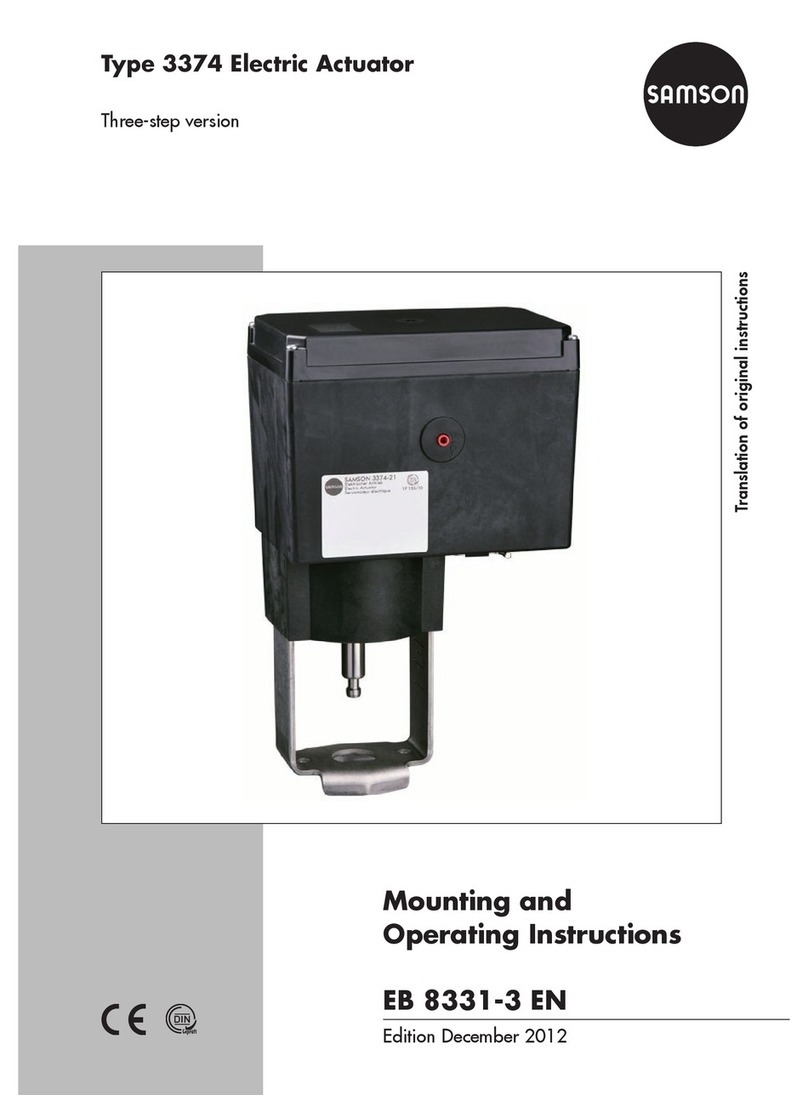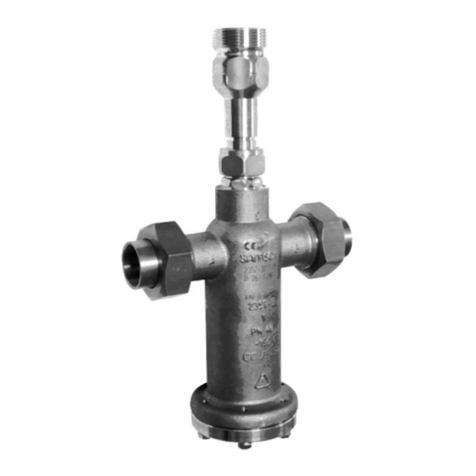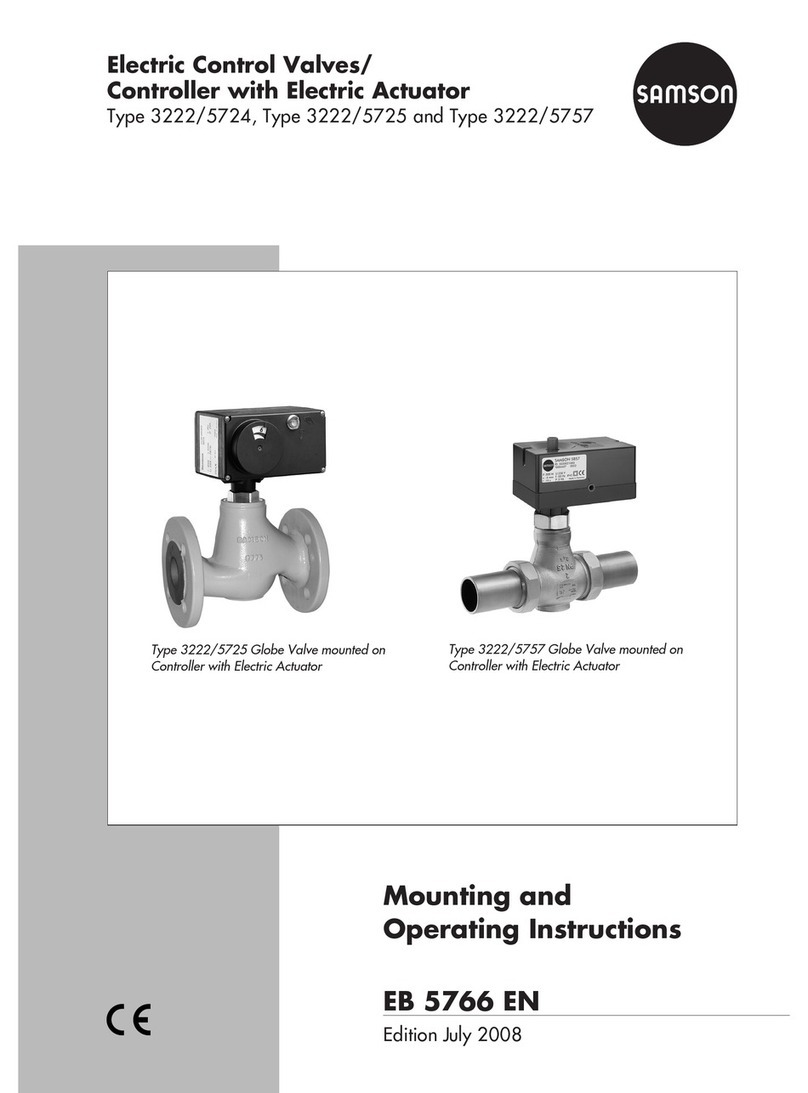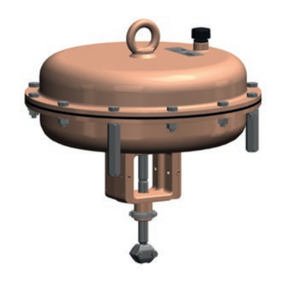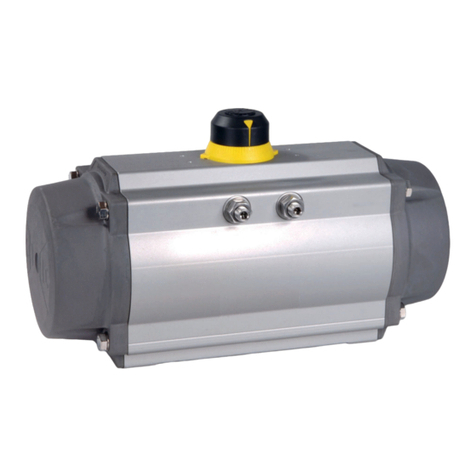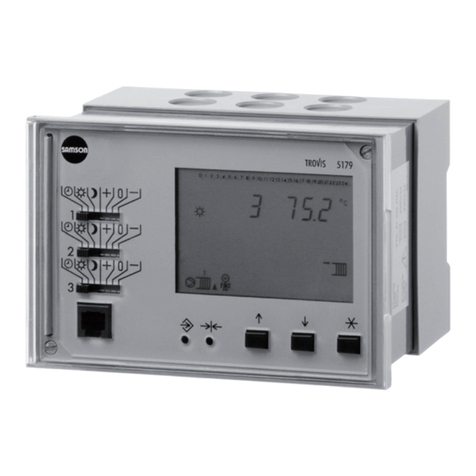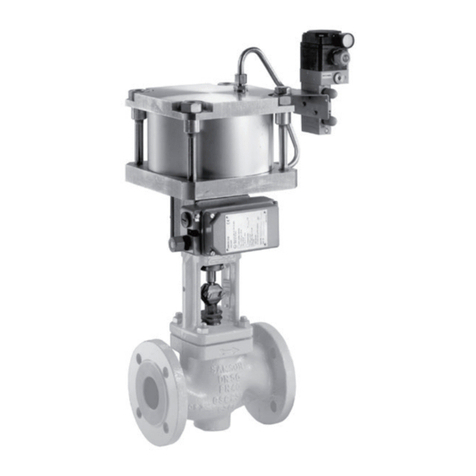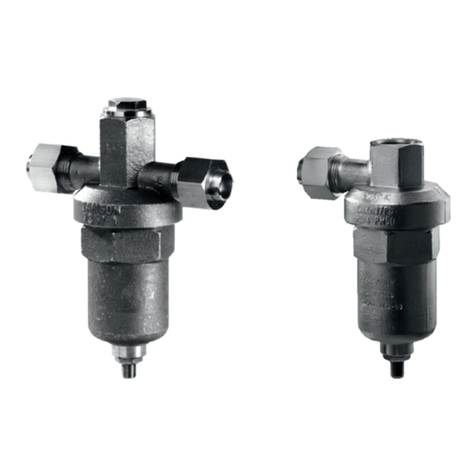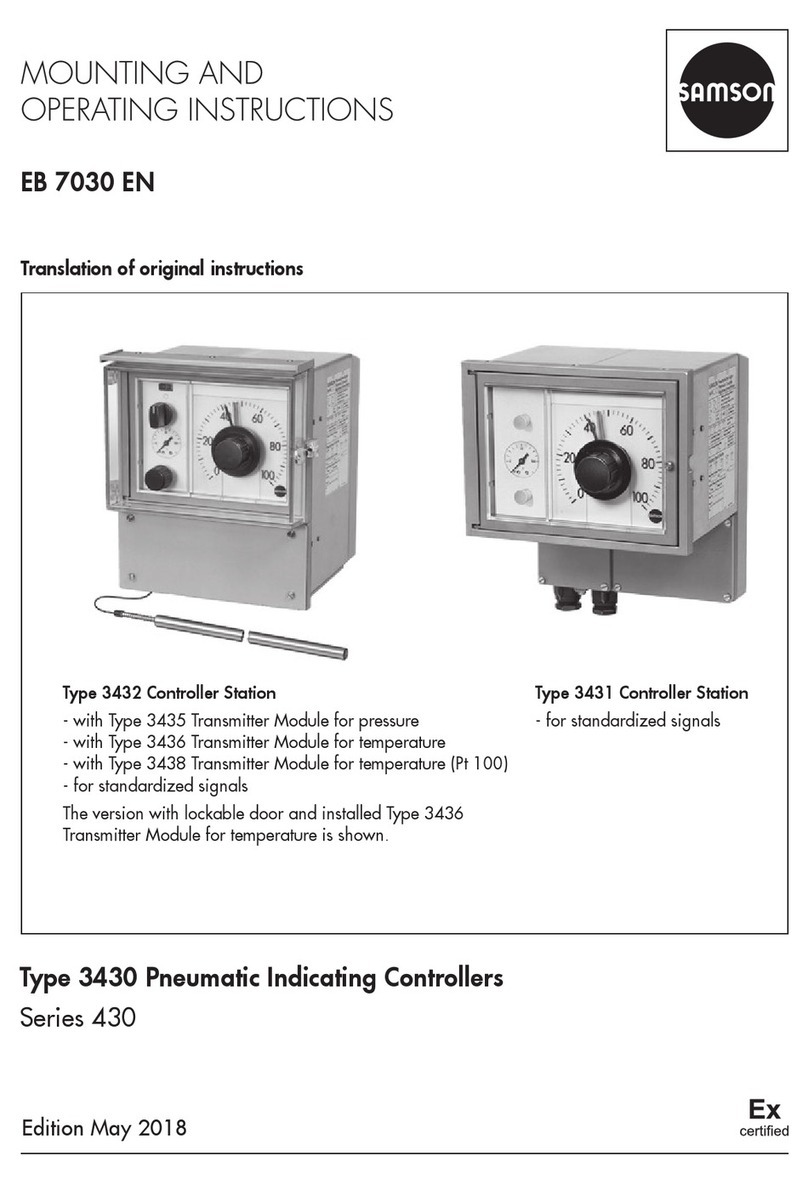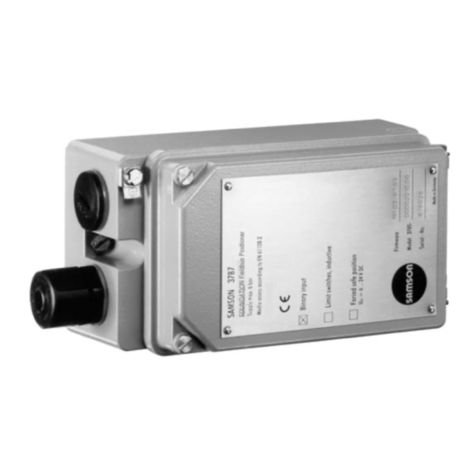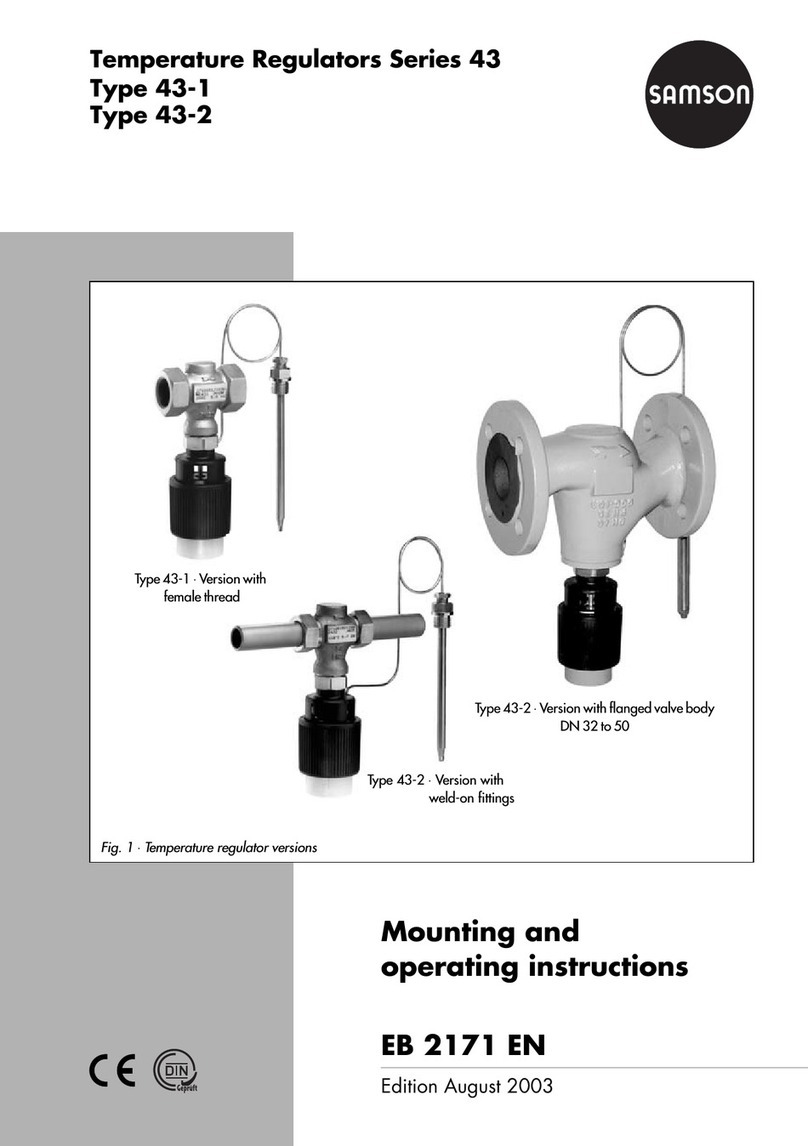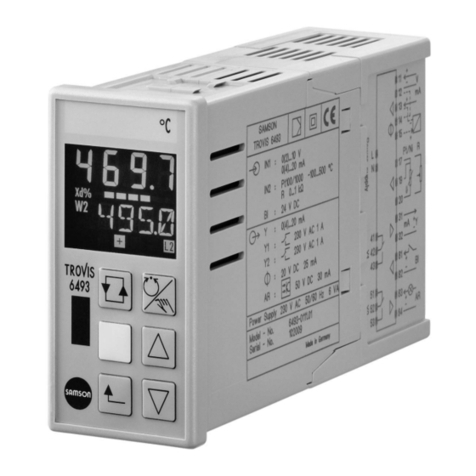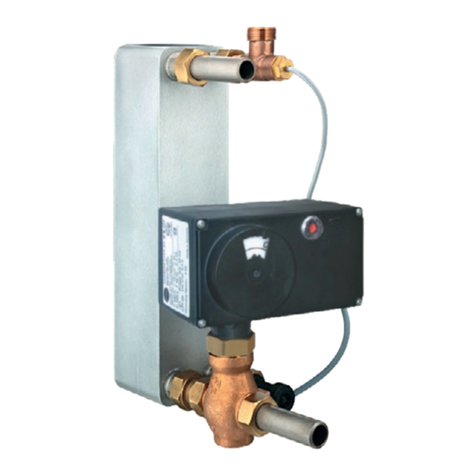
5. Lift off the diaphragm plate with dia-
phragm and replace them in reverse or-
der. Tighten nut (1).
6. Apply lubricant/sealant (order no.
8152-0043) to the actuator stem.
7. Place the diaphragm plate with dia-
phragm in the top diaphragm case. In-
sert the springs (6) and slide the lower
diaphragm case over the actuator stem.
8. Screw tight the nuts and bolts of the dia-
phragm cases.
9. Remove vent plug (3) from top dia-
phragm case and screw it into the load-
ing pressure connection on the bottom
diaphragm case.
The actuator springs now press against the
diaphragm plate from below and cause the
actuator stem to retract. The loading pres-
sure is connected over the connection (4) to
the top diaphragm chamber. The actuator
stem starts to extend when the signal pres-
sure overcomes the force of the springs.
10.Record the changed fail-safe action on
the nameplate!
Proceed in the same manner for the Type
3271-5 Actuator, but additionally install the
metal plate (7.1).
For the version intended for attachment to
micro-flow valves, additionally install the
bushing (2.1) for the mechanical travel stop.
In Type 3271-52 Actuator with 60 cm2dia-
phragm area, unthread the screw (20) and
then remove the washer (21) and sleeve
(22).
Reversing the fail-safe action "Actuator
stem retracts" to "Actuator stem extends"
(Fig. 2)
1. Unthread nuts and remove the bolts (9)
and lift off the top diaphragm case (5).
2. Pull the diaphragm plate (7) and dia-
phragm with the actuator stem (2) out of
the bottom diaphragm case (10). Re-
move the springs (6).
3. Unscrew nut (1), while holding the nut
(1.1) stationary with a suitable tool.
Caution! Proceed carefully to avoid
damaging the seals of the actuator stem.
4. Remove the diaphragm plate with dia-
phragm and replace them in reverse or-
der. Screw tight nut (1).
5. Coat the actuator stem with sealant/lu-
bricant (order no. 8152-0043) and in-
sert it into the bottom diaphragm cham-
ber along with the diaphragm plate and
diaphragm.
6. Insert springs (6) and place the top dia-
phragm case back on.
7. Screw tight the nuts and bolts of the dia-
phragm cases.
8. Remove the vent plug (3) from the bot-
tom loading pressure connection and
place it in the top connection.
The springs which are now pressed from the
top against the diaphragm plate cause the
actuator stem to extend.
The signal pressure is connected via the con-
nection (11) to the bottom diaphragm cham-
ber. The actuator stem starts to retract when
the signal pressure overcomes the force of
the springs.
EB 8310 EN 7
Operation
